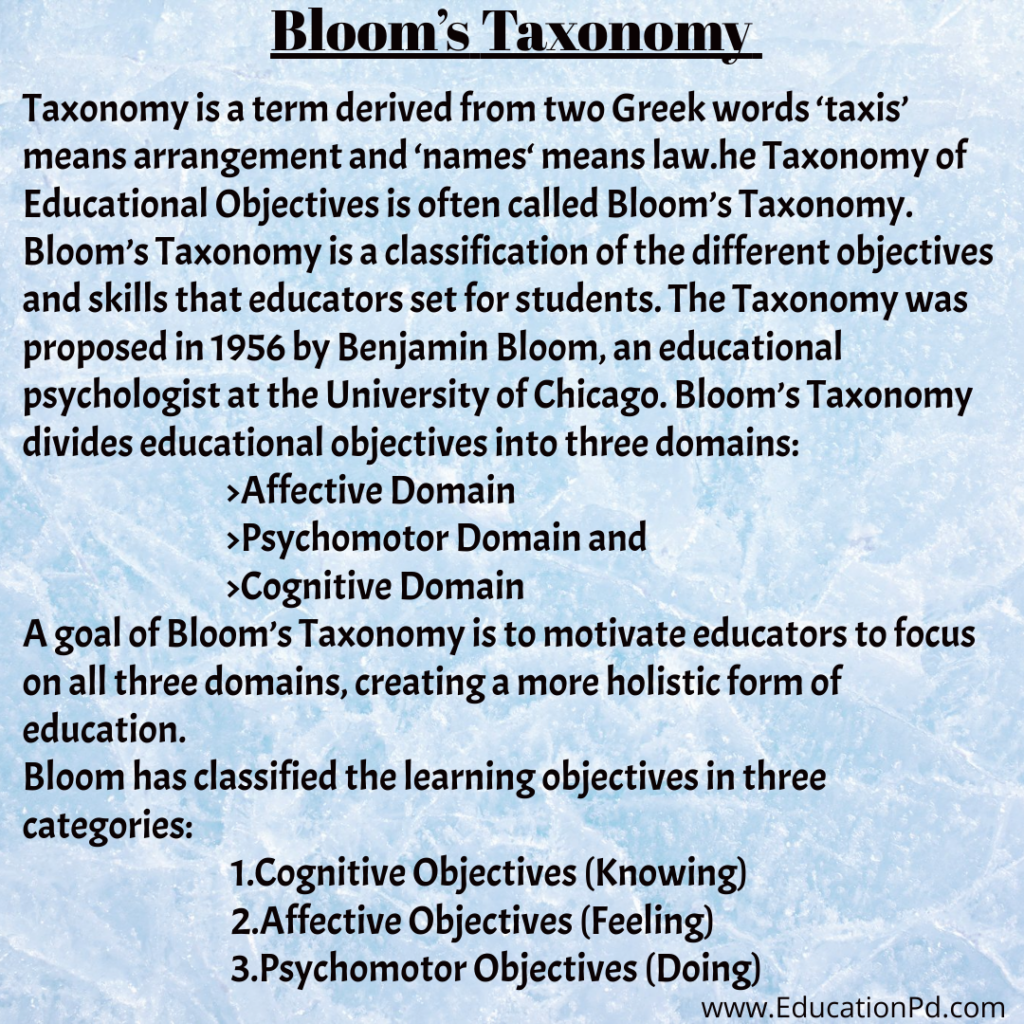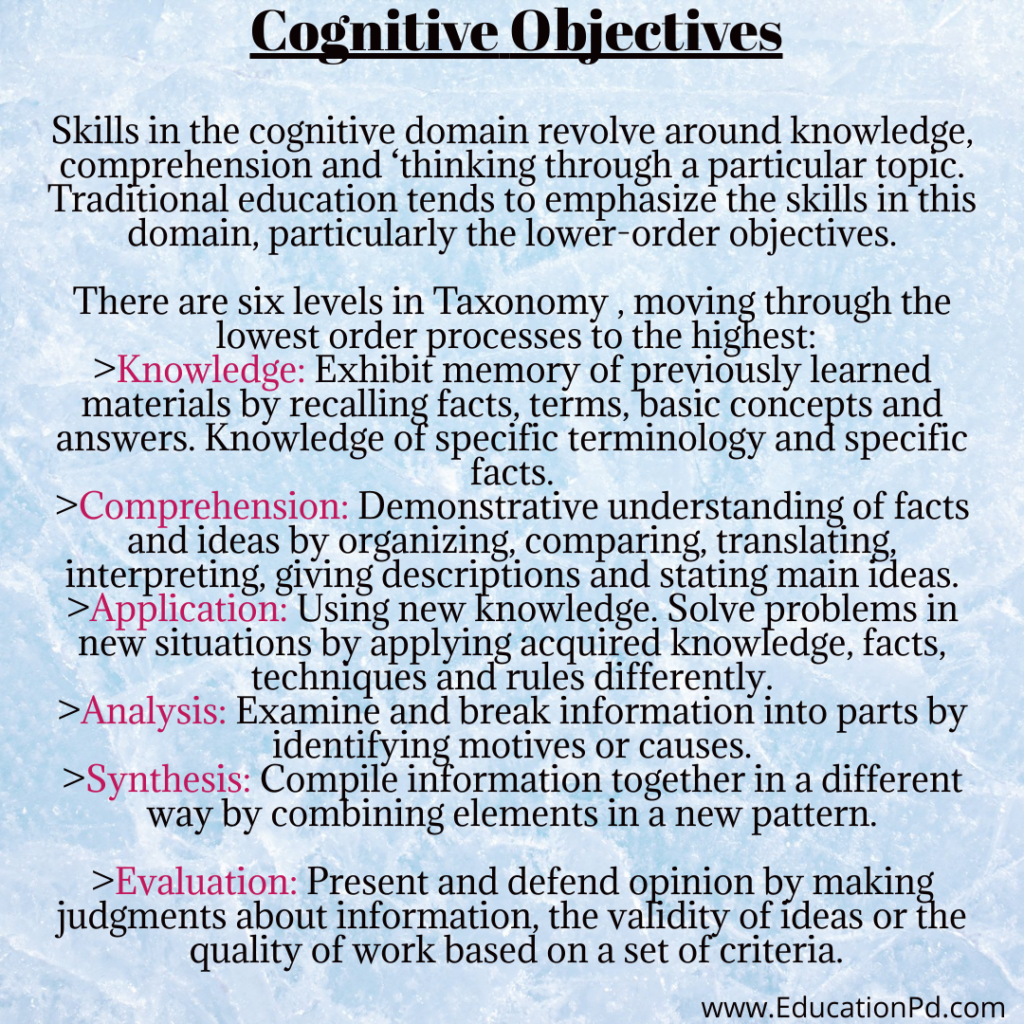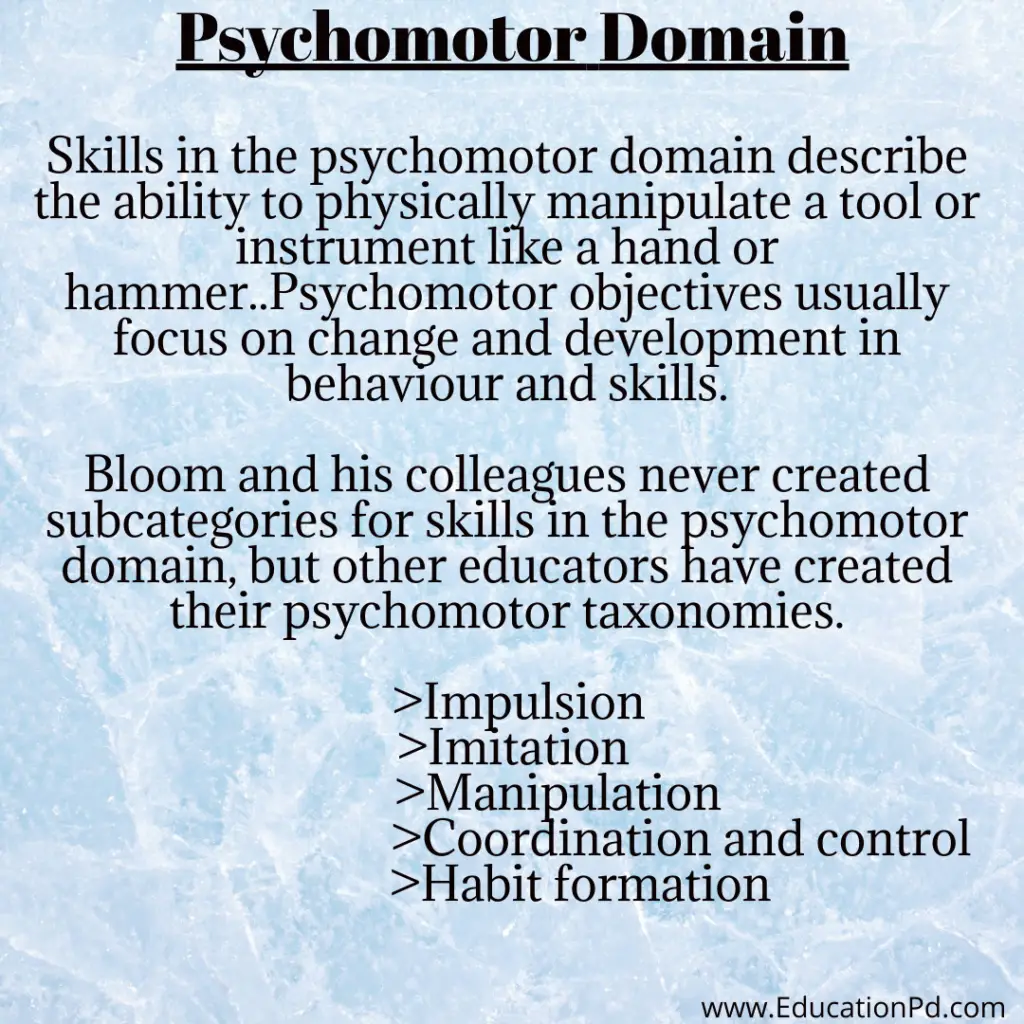Back to: Educational Technology in Education B.ed Notes, M.A Notes, IGNOU Notes
Bloom’s Taxonomy B.ed Notes
Taxonomy is a term derived from two Greek words ‘taxis’ means arrangement and ‘names‘ means law. In this derivative sense ‘ Taxonomy’ means a lawful or orderly arrangement. Here, ‘Taxonomy’ means the classification of educational objectives. The educational objectives imply the changes that we try to produce in a child.
The Taxonomy of Educational Objectives is often called Bloom’s Taxonomy. Bloom’s Taxonomy is a classification of the different objectives and skills that educators set for students. The Taxonomy was proposed in 1956 by Benjamin Bloom, an educational psychologist at the University of Chicago. Bloom’s Taxonomy divides educational objectives into three domains:
- Affective Domain
- Psychomotor Domain and
- Cognitive Domain
A goal of Bloom’s Taxonomy is to motivate educators to focus on all three domains, creating a more holistic form of education.
Bloom has classified the learning objectives in three categories:
- Cognitive Objectives (Knowing)
- Affective Objectives (Feeling)
- Psychomotor Objectives (Doing)

Cognitive Objectives
Skills in the cognitive domain revolve around knowledge, comprehension and ‘thinking through a particular topic. Traditional education tends to emphasize the skills in this domain, particularly the lower-order objectives.
There are six levels in Taxonomy , moving through the lowest order processes to the highest:
- Knowledge: Exhibit memory of previously learned materials by recalling facts, terms, basic concepts and answers. Knowledge of specific terminology and specific facts.
- Comprehension: Demonstrative understanding of facts and ideas by organizing, comparing, translating, interpreting, giving descriptions and stating main ideas.
- Application: Using new knowledge. Solve problems in new situations by applying acquired knowledge, facts, techniques and rules differently.
- Analysis: Examine and break information into parts by identifying motives or causes.
- Synthesis: Compile information together in a different way by combining elements in a new pattern.
- Evaluation: Present and defend opinion by making judgments about information, the validity of ideas or the quality of work based on a set of criteria.

Affective Objectives
Skills in the affective domain describe the way people react emotionally and their ability to feel another living thing’s pain or joy. Affective objectives typically target the awareness and growth in attitudes, emotions and feelings.
There are five levels of affective domain moving through the lowest order processes to the highest:
- Receiving: The lowest level; the student passively pays attention. Without this level, no learning can occur.
- Responding: The student actively participates in the learning process, and not only attends to stimulus, but the student also reacts in some way.
- Valuing: The student attaches a value to an object, phenomenon or piece of information.
- Organizing: The student can put together different values, information and ideas and accommodate them within his schema; comparing, relating and elaborating on what has been learned.
- Characterizing: The student has held a particular value or belief that now exerts influence on his behaviour so that it becomes a characteristic.

Psychomotor Domain
Skills in the psychomotor domain describe the ability to physically manipulate a tool or instrument like a hand or hammer. Psychomotor objectives usually focus on change and development in behaviour and skills.
Bloom and his colleagues never created subcategories for skills in the psychomotor domain, but other educators have created their psychomotor taxonomies.
- Impulsion
- Imitation
- Manipulation
- Coordination and control
- Habit formation
